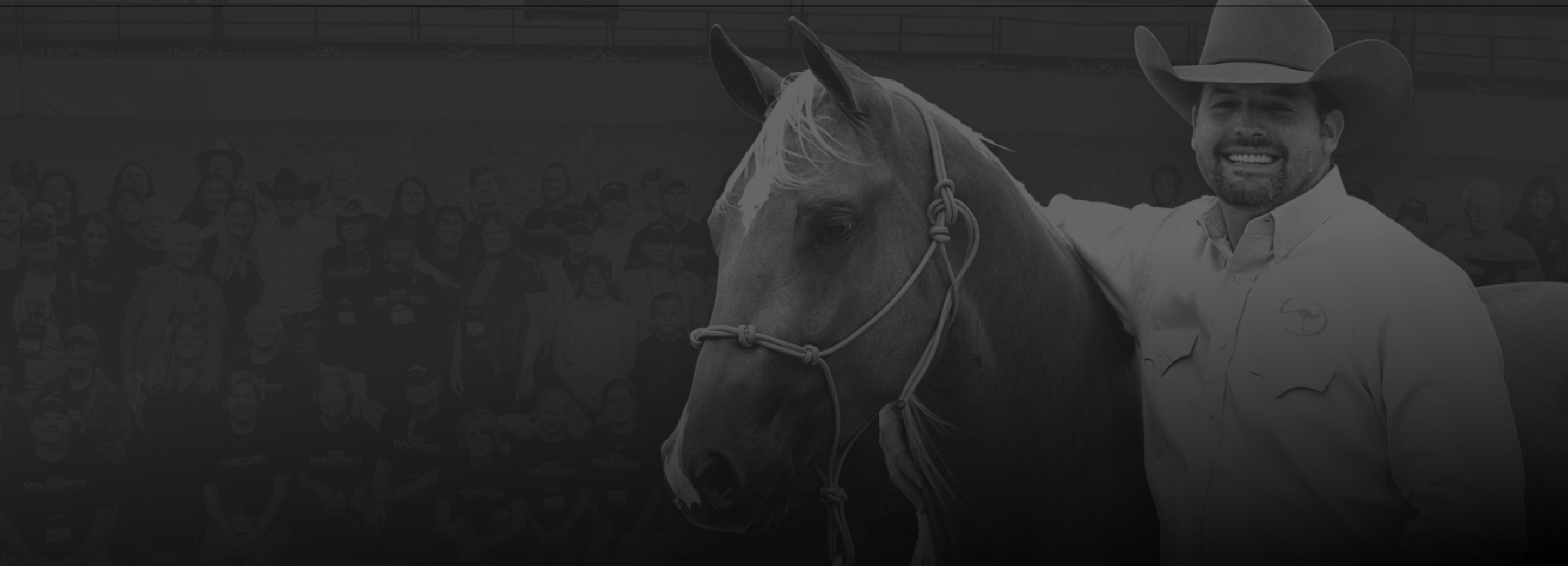Stopping a Horse from Chewing Everything
Clinton Anderson from Downunder Horsemanship has developed an effective method to train horses, regardless of their age, history or behavioral issues. He’s devoted his life to creating the best training tools and videos available to help bring his training method to you. To help make sure you get the most from your training sessions, Clinton has been working to develop a new platform to deliver his method to you. Now, with the availability of the Mobile Method, you’ll be able to access the Clinton Anderson training method wherever you are. Whether you’re on the go or at the barn, the Mobile Method gives you access digital training kits, download videos and training content directly onto your mobile device or computer, and more. You can watch Clinton’s weekly endeavors where he tackles some of the most challenging situations with problem horses, and with problem owners, right on your smartphone. On this week’s episode, we watch as Clinton works with his horse Benz to tackle some mouthy problems.

Benz is one of Clinton’s performance horses, but he has a bit of a chewing problem. As the episode begins, this is made evident almost immediately. Benz likes to chew on the lead rope and play with it with his mouth. Younger horses act like toddlers; they put things in their mouths, they teeth, and they want to interact with the environment around them as much as possible. Oftentimes, that includes mouthing and chewing on equipment.
Clinton tells us that the behavior doesn’t bother him per se. As long as the horses stands quietly and plays with the lead rope, not causing any problems or creating drama – he’s just interacting with the lead rope – he doesn’t see it as an issue. It’s a lot like a child teething – he tries to put anything and everything in his mouth. For most horses, it’s a stage they’ll grow out of. But, it can become a problem when a horse gets destructive with his chewing and starts to destroy equipment.
You’ll find horsemen offering all kinds of quick fixes for horses that chew on equipment, from hitting the horse every time he takes the lead rope in his mouth to smearing the lead rope with a concoction to make it taste bad to the horse and everything in between. Attempting to correct the horse by hitting him doesn’t work because for most horses it just turns into a game. How quickly can they grab the lead rope and drop it before you turn around and swat them? It’s a game you won’t often win. All of the anti-cribbing mixtures on the market and home remedies of coating the lead rope with a substance the horse doesn’t like are either ineffective or cause a big mess. Smearing hot mustard on the lead rope may stop the horse from grabbing onto it, but what a mess to work with!
Clinton’s fix is pretty simple. If he has a horse in the barn that is destructive, instead of tying the horse up with a lead rope, he uses a chain. It’s important to understand that a chain is only used when a horse is confident about standing tied up and has no issues. He’s not throwing a fit or pulling back; he understands how to yield to pressure and stands quietly while tied up. His only problem is that he’s playful and is destroying your equipment. It would be a major mistake to tie a horse up with a chain if he didn’t understand how to stand tied up and if he had problems while being tied up. The first time he’d try to pull back or escape the situation, he’d hit the solid chain and it’d turn into a wreck. So you have to use some common sense and not set your horse up for failure.
When you tie the horse up with the chain that ends him mouthing pretty quickly because while he might enjoy lipping a soft lead rope, when his teeth hit the chain, it’ll feel uncomfortable to him. Imagine if you started clinking your teeth with a little metal spoon constantly. Doesn’t sound too appealing, does it? It doesn’t take long at all for the horse to ignore what he’s tied to and stand quietly.
Keep something in mind, all horses are individuals and come with their own quirks and personalities. They’re just like us. You may have a young horse that never tries to put the lead rope or any other piece of equipment in his mouth or you may have one that’s constantly fiddling with the lead rope. Don’t make a big deal of it unless it becomes a big deal, meaning your equipment is getting destroyed. Throughout the course of his years with horses, Clinton has found that more often than not chewing and lipping on lead ropes is something that just goes away on its own as the horse matures.




